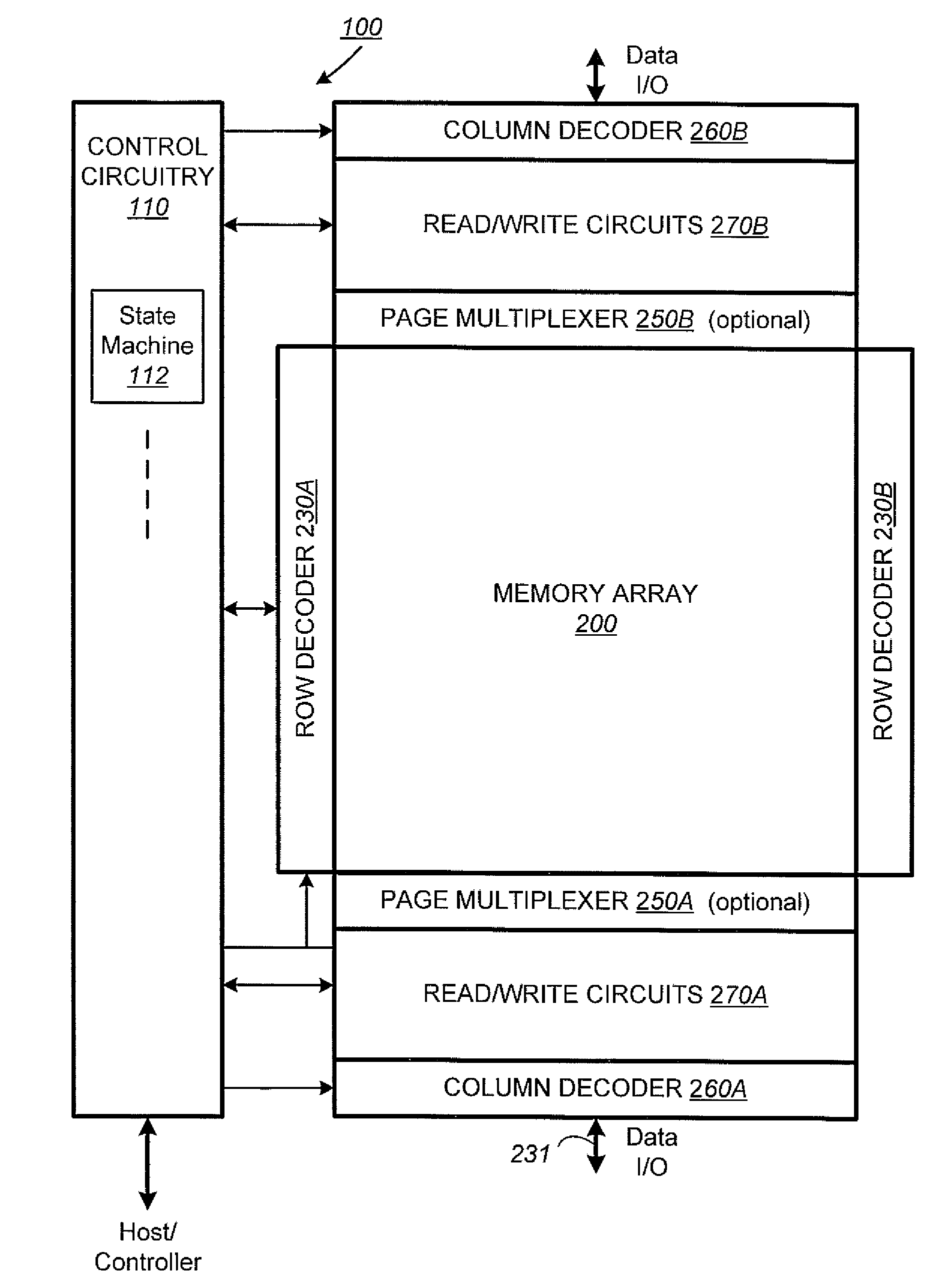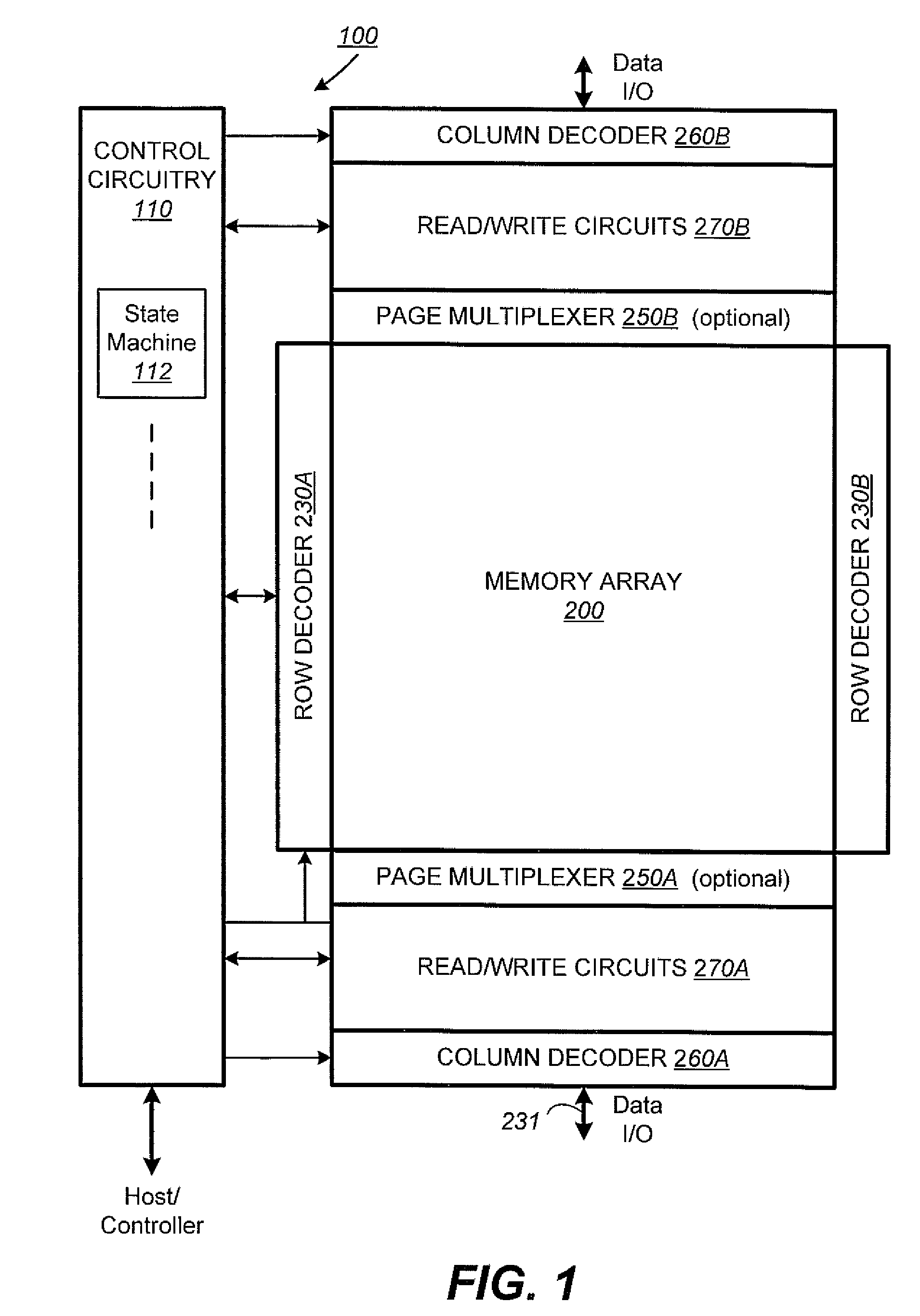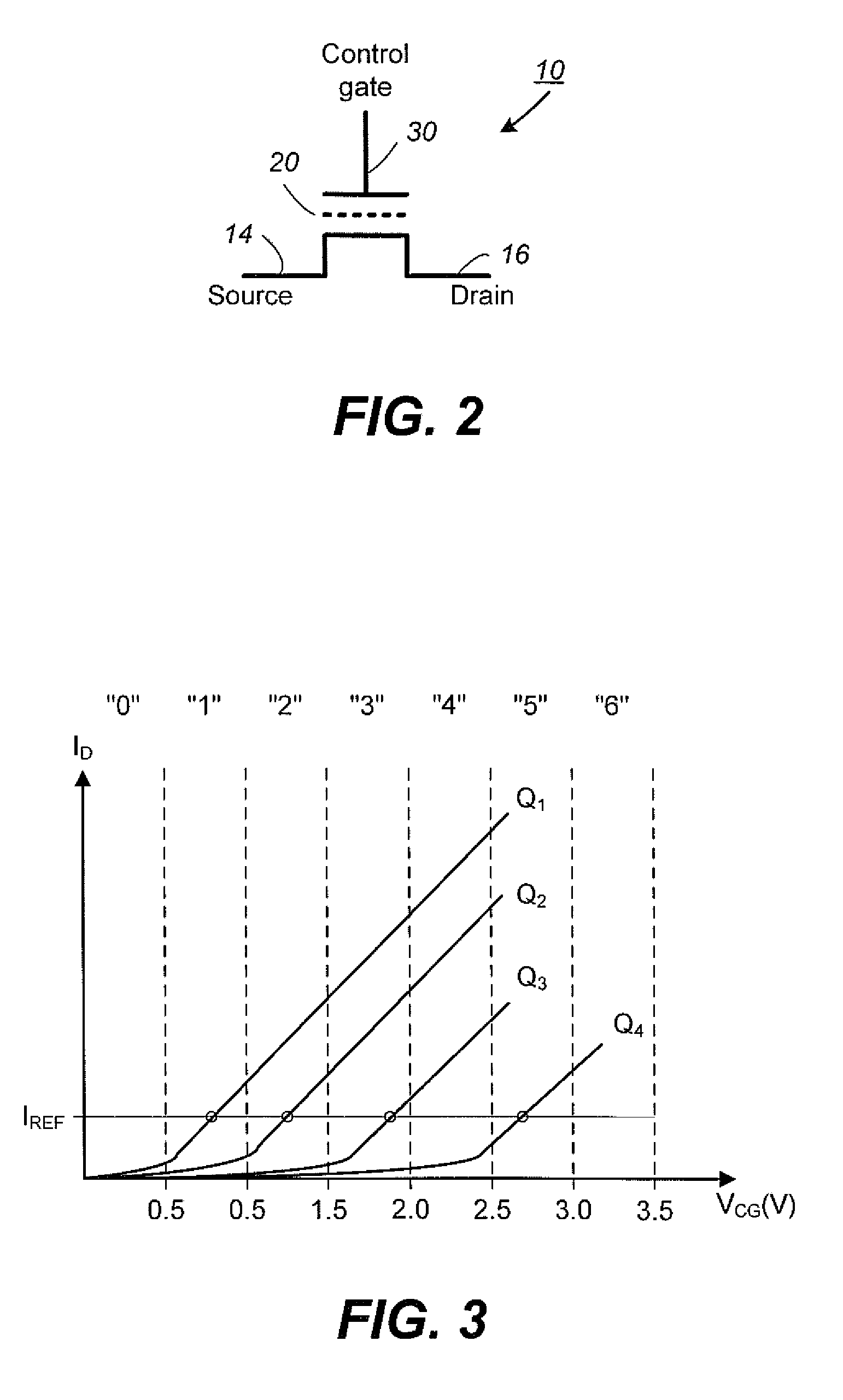Non-Volatile Memory And Method With Continuous Scanning Time-Domain Sensing
- Summary
- Abstract
- Description
- Claims
- Application Information
AI Technical Summary
Benefits of technology
Problems solved by technology
Method used
Image
Examples
Embodiment Construction
Memory System
[0057]FIG. 1 to FIG. 12 provide example memory systems in which the various aspects of the present invention may be implemented or illustrated.
[0058]FIG. 13 to FIG. 21 illustrate context and details of the various embodiments according to a first aspect of the present invention of time-domain sensing.
[0059]FIG. 22 to FIG. 30 illustrate context and details of the various embodiments according to a second aspect of the present invention in which the time-domain sensing technique is applied to sensing on a current word line while compensating for perturbations from an adjacent word line.
[0060]FIG. 1 illustrates schematically the functional blocks of a non-volatile memory chip in which the present invention may be implemented. The memory chip 100 includes a two-dimensional array of memory cells 200, control circuitry 210, and peripheral circuits such as decoders, read / write circuits and multiplexers.
[0061]The memory array 200 is addressable by word lines via row decoders 23...
PUM
 Login to View More
Login to View More Abstract
Description
Claims
Application Information
 Login to View More
Login to View More - R&D
- Intellectual Property
- Life Sciences
- Materials
- Tech Scout
- Unparalleled Data Quality
- Higher Quality Content
- 60% Fewer Hallucinations
Browse by: Latest US Patents, China's latest patents, Technical Efficacy Thesaurus, Application Domain, Technology Topic, Popular Technical Reports.
© 2025 PatSnap. All rights reserved.Legal|Privacy policy|Modern Slavery Act Transparency Statement|Sitemap|About US| Contact US: help@patsnap.com



